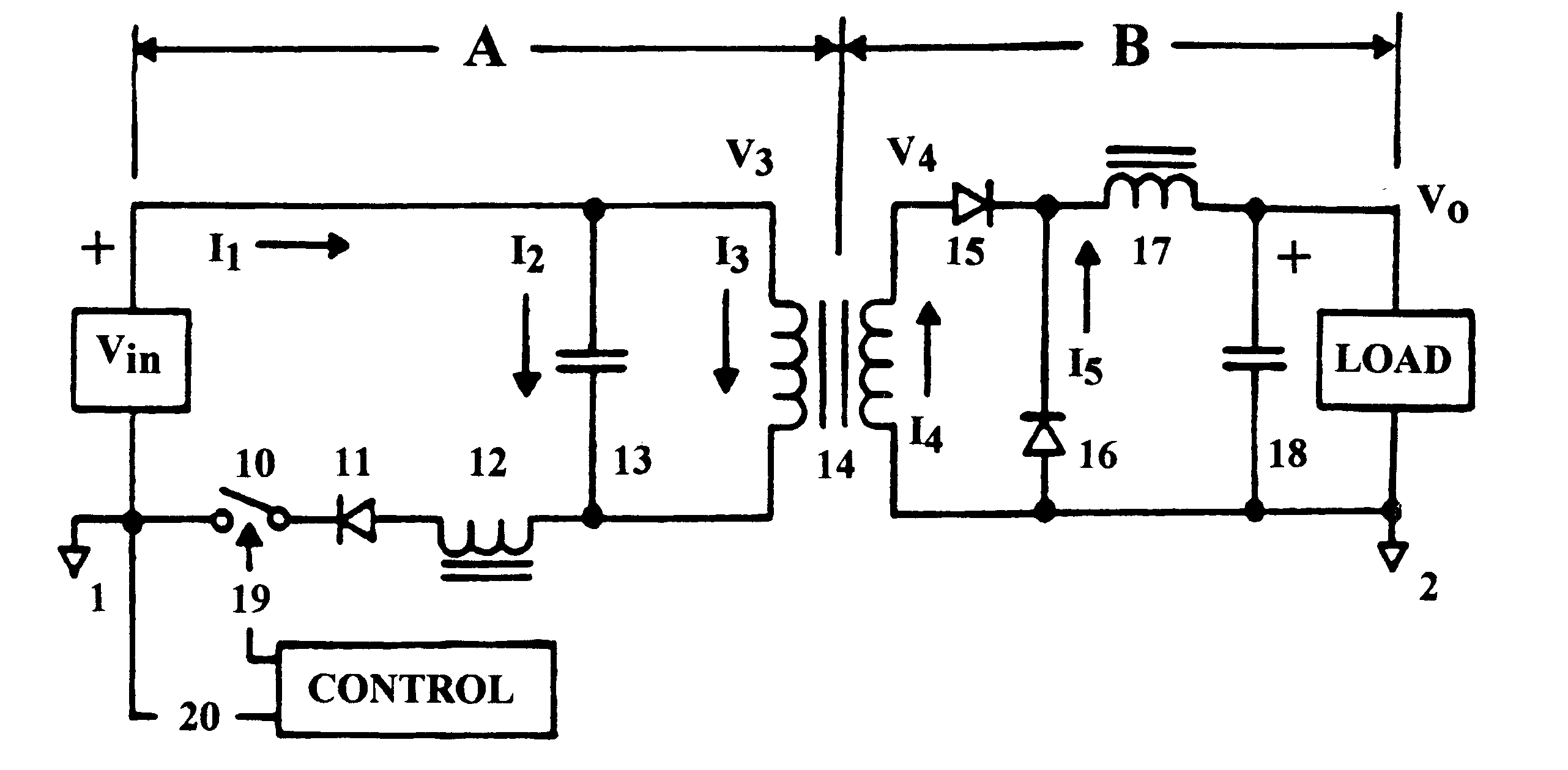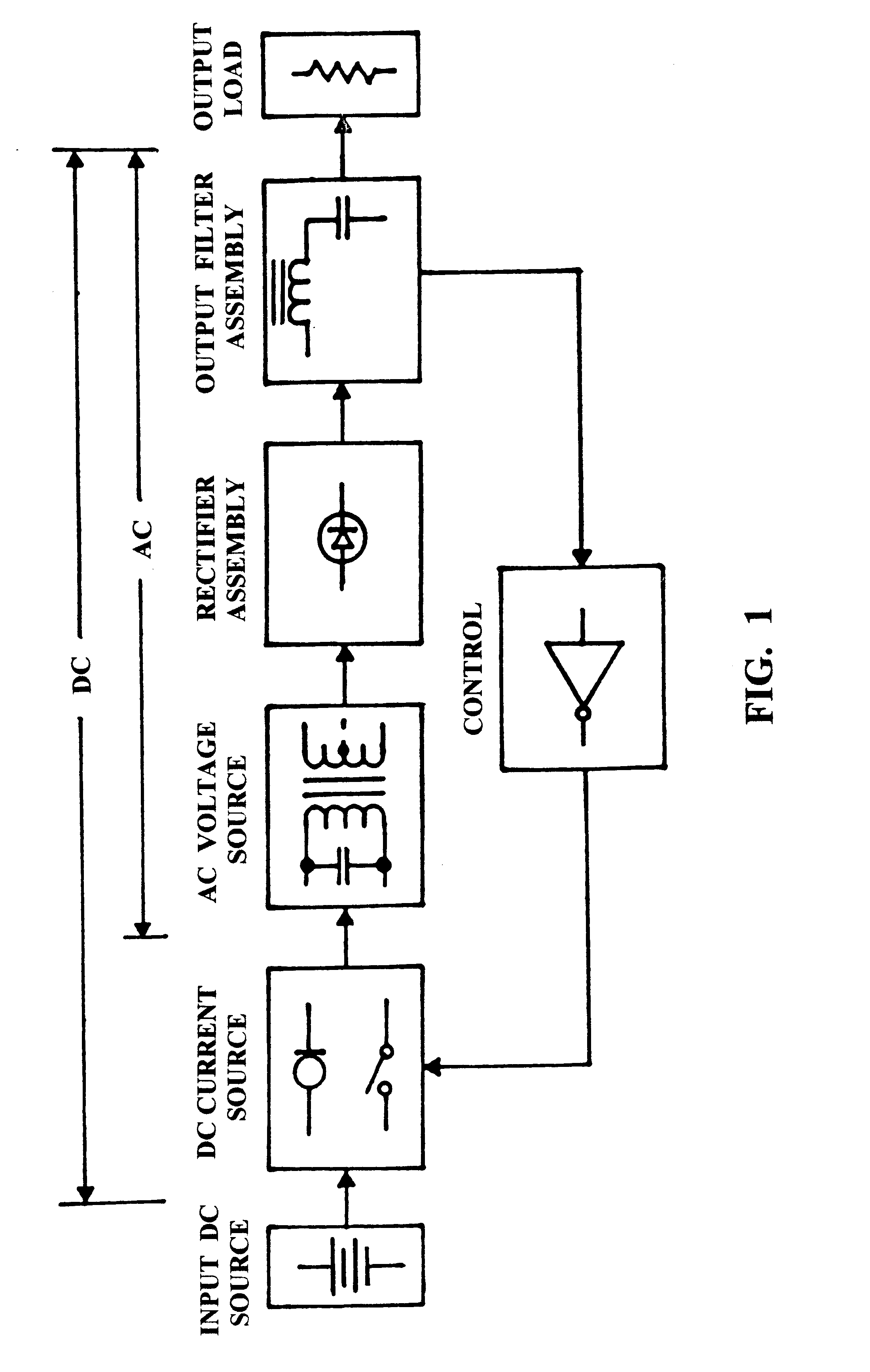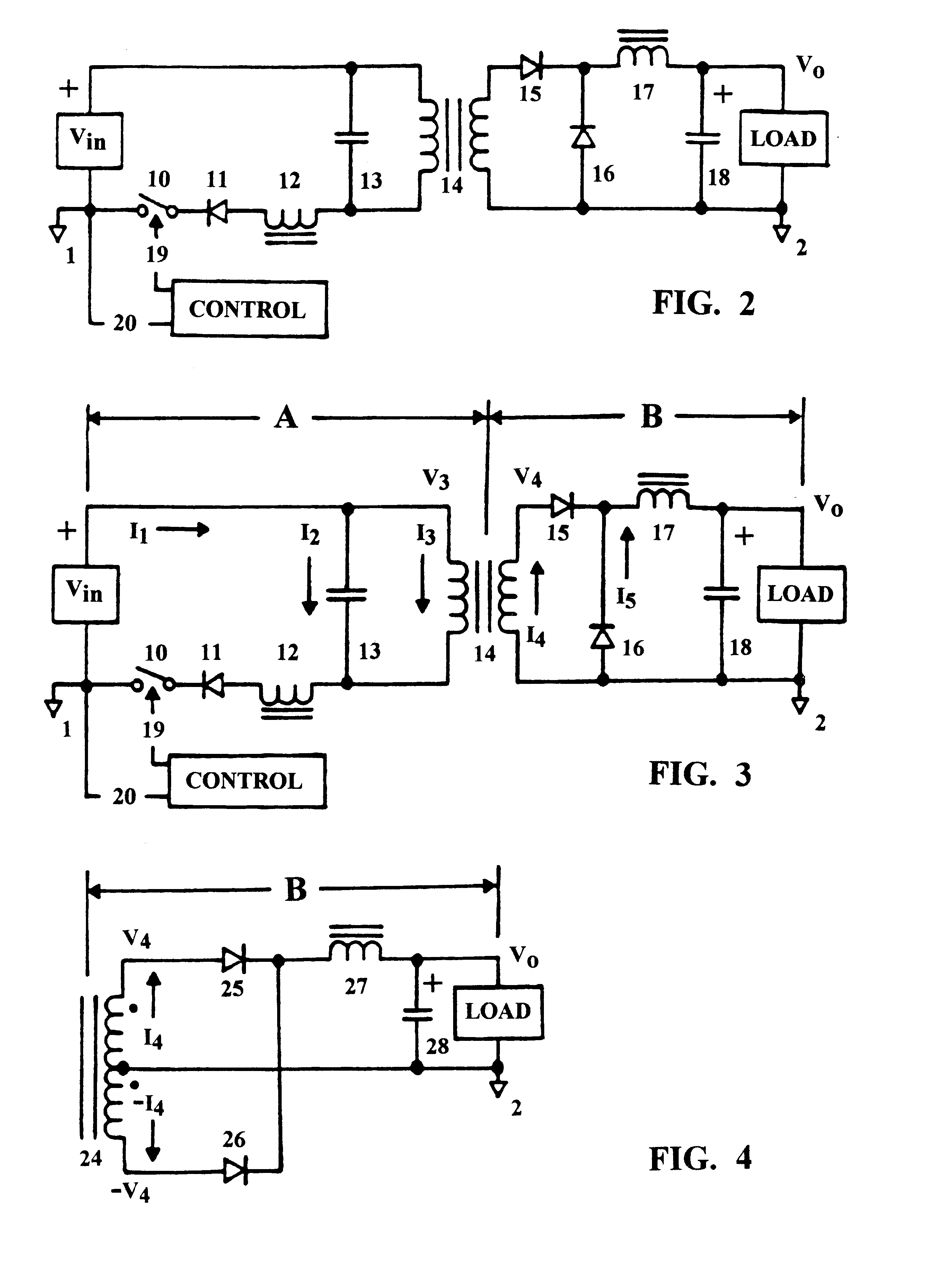Resonant power converter with primary-side tuning and zero-current switching
a power conversion and primary-side tuning technology, applied in process and machine control, electric variable regulation, instruments, etc., can solve problems such as ringing, circuit parasitic bounded, and inability to achieve ringing,
- Summary
- Abstract
- Description
- Claims
- Application Information
AI Technical Summary
Benefits of technology
Problems solved by technology
Method used
Image
Examples
first embodiment
Following description of circuit operation refers to the first embodiment based on a design coefficient K of 1.41. Referring to FIG. 3, successive closure of power switch 10 establishes a state of equilibrium in functional loop--A allowing power switch 10 transitional states to migrate to their natural time-domain. This juncture, within the prescribed time base, is coincident with the amplitude of the average volt-second product enclosed in the Fn portion of the cycle for the on-time transition as a fixed event. The off-time transition, being a design variable, is set to occur at some point beyond the cross-over threshold of the average volt-second amplitude for the forced oscillation, Fo, period of the decaying voltage across resonating capacitor 13, but before it decays below the projected level of DC voltage source Vin. Power switch 10 turn-off in this region insures zero-current switch transition and prevents inadvertent turn-on of unidirectional conducting device 11 which commu...
second embodiment
The following description of circuit operation refers to the second embodiment based on a design coefficient K of 1.41. Circuit structure is that of transformer in FIG. 3 terminated by a center-tapped secondary winding as shown in FIG. 4. This configuration allows full-wave power transfer from the DC voltage source Vin to the output load during each half cycle of the composite carrier-frequency. Input functional loop--A, as described for FIG. 3 in previous design examples, establishes an AC voltage signal applied by resonant capacitor 13 to the input winding of transformer 24 which is identical to that of transformer 14. The secondary winding on transformer 24 is center-tapped as shown in FIG. 4 and routed to a full-wave rectifier / filter assembly for extraction of the DC component applied to a DC load. The operating region for a design coefficient K of 1.41 is defined as point--A in FIG. 5. Internal phasing of transformer 24 output winding in FIG. 4, is such that the voltage applied...
PUM
 Login to View More
Login to View More Abstract
Description
Claims
Application Information
 Login to View More
Login to View More - R&D
- Intellectual Property
- Life Sciences
- Materials
- Tech Scout
- Unparalleled Data Quality
- Higher Quality Content
- 60% Fewer Hallucinations
Browse by: Latest US Patents, China's latest patents, Technical Efficacy Thesaurus, Application Domain, Technology Topic, Popular Technical Reports.
© 2025 PatSnap. All rights reserved.Legal|Privacy policy|Modern Slavery Act Transparency Statement|Sitemap|About US| Contact US: help@patsnap.com



